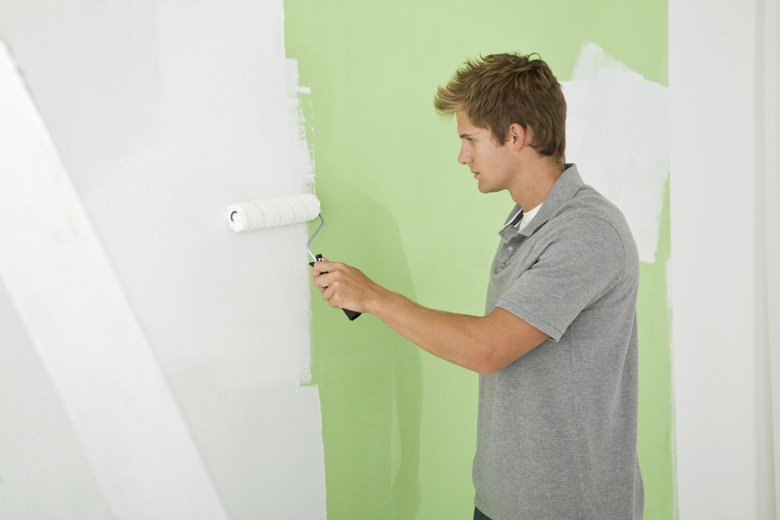Do Cold Temperatures Affect Painting Interior Walls?
Paint, like other materials, reacts to changes in temperatures, even if you are painting inside your temperature-controlled house. You need to be mindful of the effects of cold weather on different types of paint and take any steps to ensure the air and walls in the room you wish to paint are warm enough so they do not affect the paint adversely.
Ventilation
Ventilation
Whenever you paint a room, you need to allow for proper ventilation by opening the windows, allowing exterior air to flow into the room. When the temperatures dip, some people may be tempted not to open the windows. A lack of ventilation keeps the paint fumes in the room you are painting, presenting a health risk to you and anyone else exposed. Without air ventilation, the paint will not dry as quickly, elongating the time you must wait before settling into the room.
Heating
Heating
You need to keep the room's temperature at a certain point, which depends on the paint you are using, for the paint to bond correctly to any interior walls. Introducing heat into the room by turning up your house's furnace can keep the temperature to the point the paint needs to bond correctly, which can vary depending on the type of paint and the brand. Still, with the room temperature high enough, the exterior walls inside your home may be subject to condensation, similar to your windows, because of the difference in temperature between the inside and outside. Opening a window can help reduce the likelihood of condensation since the air flows freely in the room.
Construction
Construction
Whether you are adding onto your existing house or are finishing up the process of building a new house, painting a new construction area when the temperature outside is cold can present problems if you cannot heat the rooms as you normally would. Using a space heater may help raise the room temperature to the point the paint bonds correctly with the walls even with a window open, but a space heater can also present a fire hazard. You need to purchase paint that is labeled as bonding correctly at temperatures that match or are below the temperature of the room you plan to paint.
Latex versus Solvent
Latex versus Solvent
The air in the room and the surface of its walls need to be 50 degrees Fahrenheit or more to apply latex house paint, otherwise the paint will not bond correctly, according to home improvement store Ace Hardware. The deeper the color, the more slowly the paint dries, potentially causing the paint to sag or ripple on the walls. If latex paint is applied in temperatures that are too low, a brownish syrup material appears on the surface of the freshly painted wall. Solvent paints should be applied in rooms where the air temperature and the temperature of the walls are at least several degrees above 50 degrees Fahrenheit, since colder temperatures cause the paint to thicken, according to Ace Hardware. The end result of applying solvent-based paints in cold temperatures is a wrinkled surface on the paint.
